How can I view class results for the Australian and Victorian Curriculum?
Assessment results can be viewed and exported via the View Class Results option within a class. The data shown can be exported for you to save.
In this article:
Main screen overview
Click into a class and click View Class Results. This will take you to the main screen overview.

From this screen, you can view accumulated individual student results, including A-E grade, average curriculum level, average growth, and pre-assessment and post-assessment results within each Strand section.
Click Numeracy Progression to view the National Numeracy Learning Progression within a class.
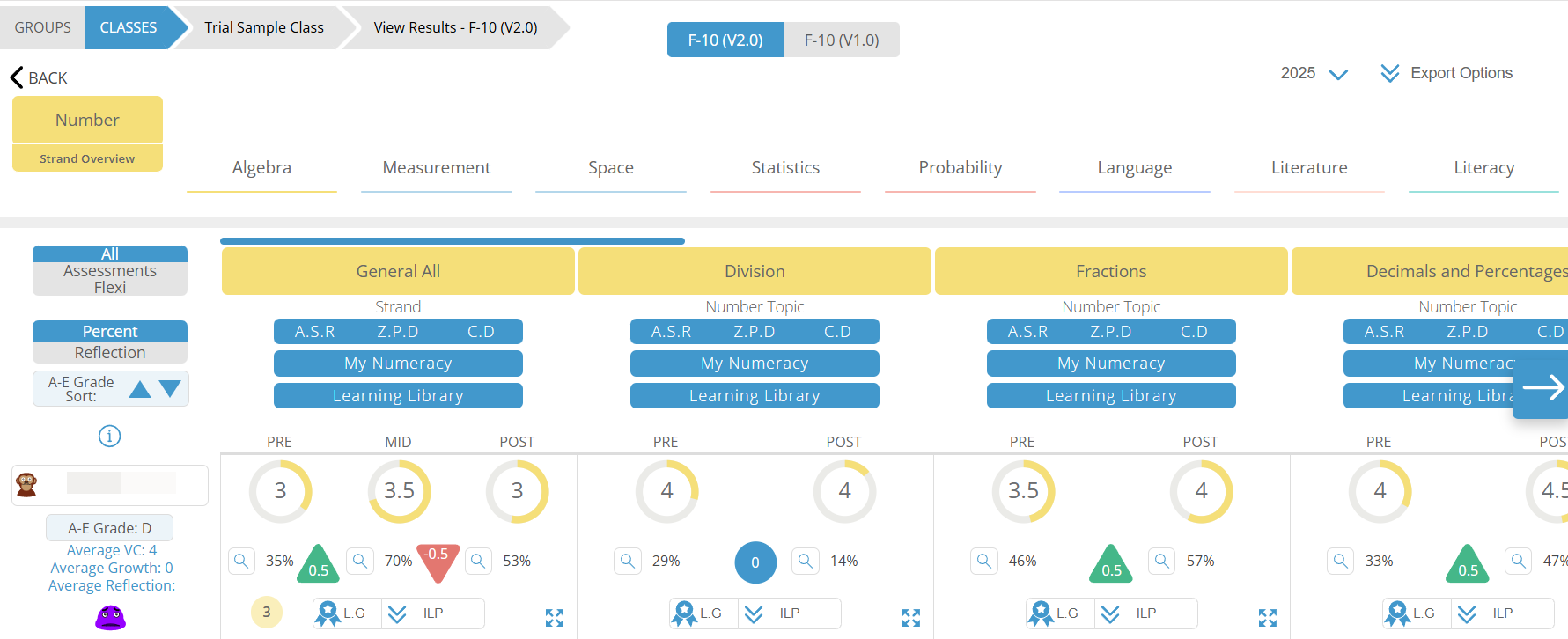
The A-E grade on the left side is averaged based on all assessments completed by the student for that strand. This grade will continue to update as the year progresses from semester to semester.
The arrows can sort the A-E grade from highest to lowest or lowest to highest.

Export options
Once you have clicked on View Class Results, click Export Options to view the different options available to export your data. The Export Data (XXX) option allows you to download your data in different formats so you are able to import this back into the programme your school uses. For example, click Export Options (GradeXpert) to download data that is able to be imported into GradeXpert.
Change the year to download data for the year you would like data for.
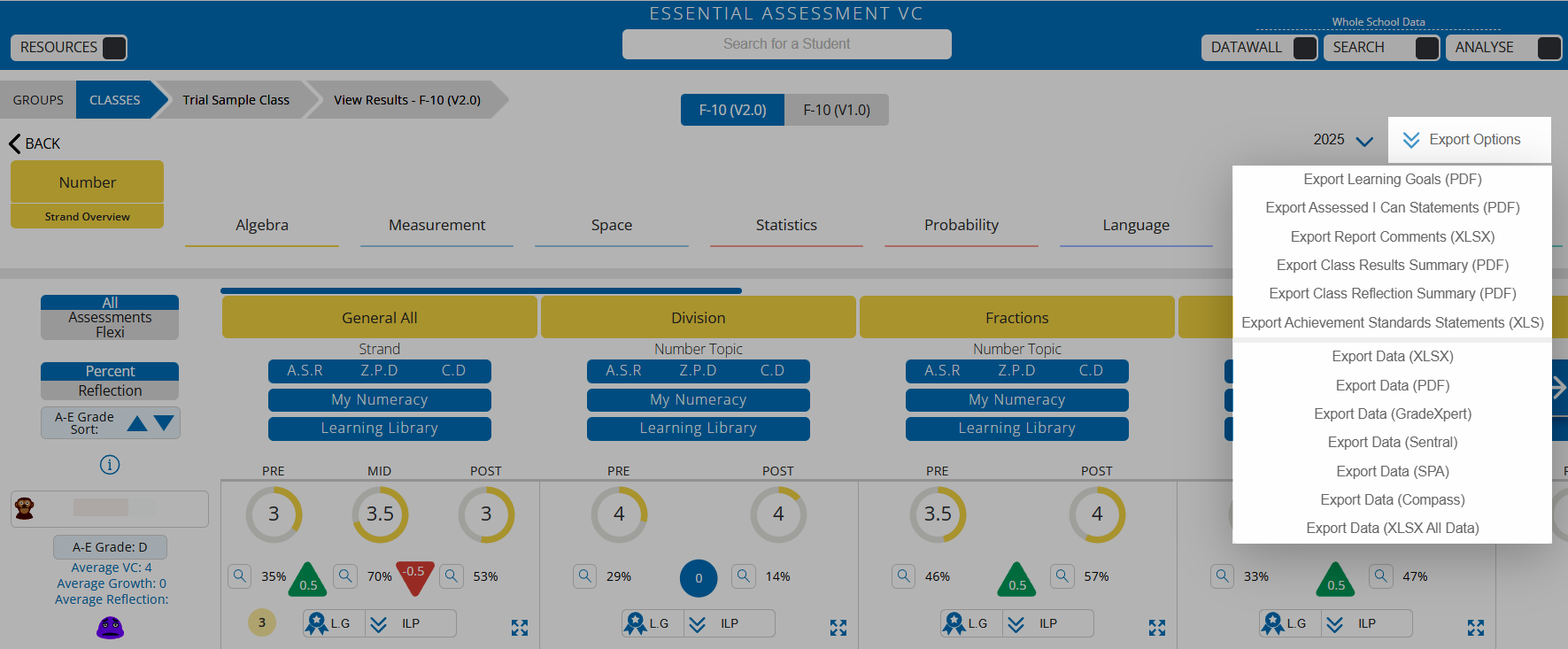
Exporting data Export Data (XLSX) and (PDF) option is unable to be done for specific assessments. You will need to export the data and then manually add a filter to the spreadsheet, which will allow you to view specific assessments.
For more information around export options on EA, head to this guide: Export options on EA
Strand overview
The Strand Overview delivers a live collation of all assessment data within each strand. Strand Overview is a helpful and continuous checkpoint throughout the year and can assist with the following:
- Triangulating and collating strand data for ongoing or end-of-semester reports.
- Providing constant context of student achievement and growth across the strand to support planning.

Strand Overview provides an up-to-date evaluation of all data contained across each strand and includes the following:
- Average achievement level.
- Overview of each content description understood and misunderstood.
- My Literacy and My Numeracy results.
- Summary of student and class growth for each content description.
- Strand-based report comment export.
A.S.R - Achievement Standard Results
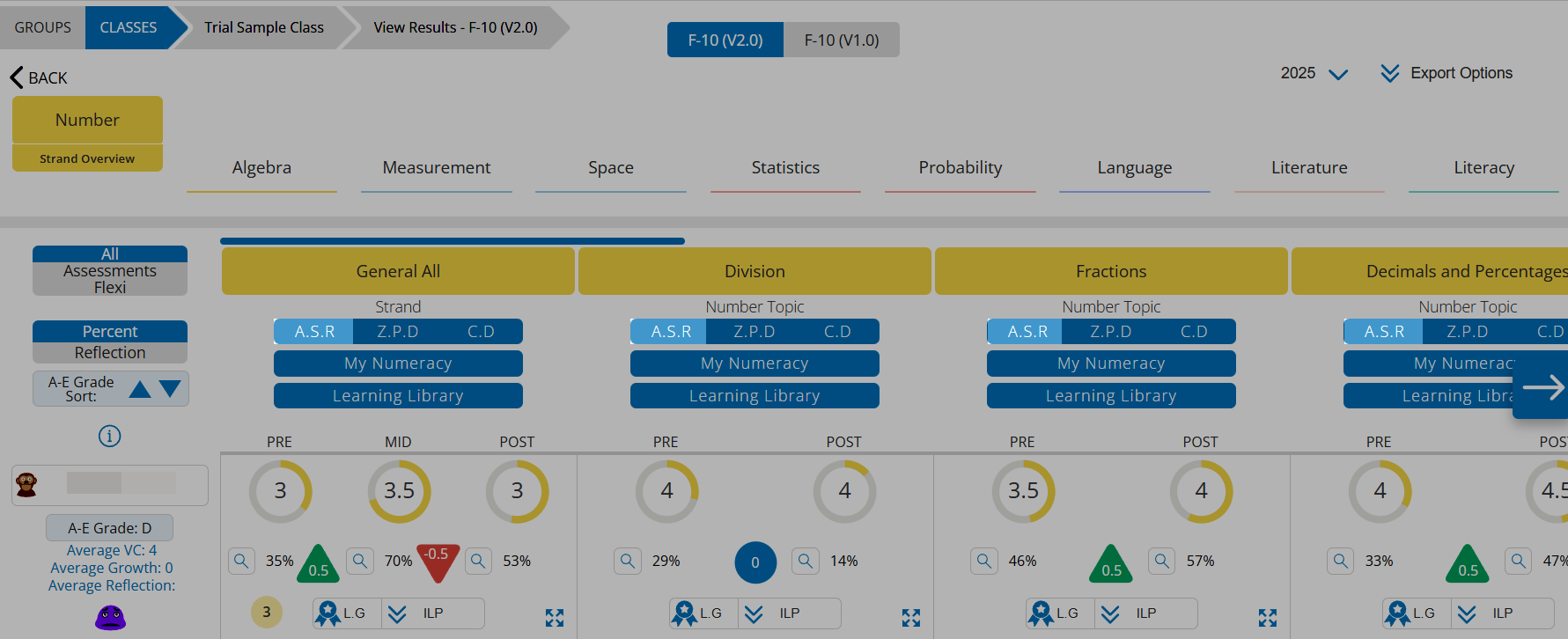
The A.S.R function is designed to guide you in understanding how a level was assigned to your students. When a student completes an assessment, they will receive a curriculum Level. The curriculum level is a direct result of the range the student was assessed in and the content understood within the assessed range.
For example, a student assessed in the range 1.5-5 who achieved 46% received a 2.5 curriculum level. This result is based on how much understanding is shown at the content descriptor level.
Choose how to view the data from the filters on the left-hand side.
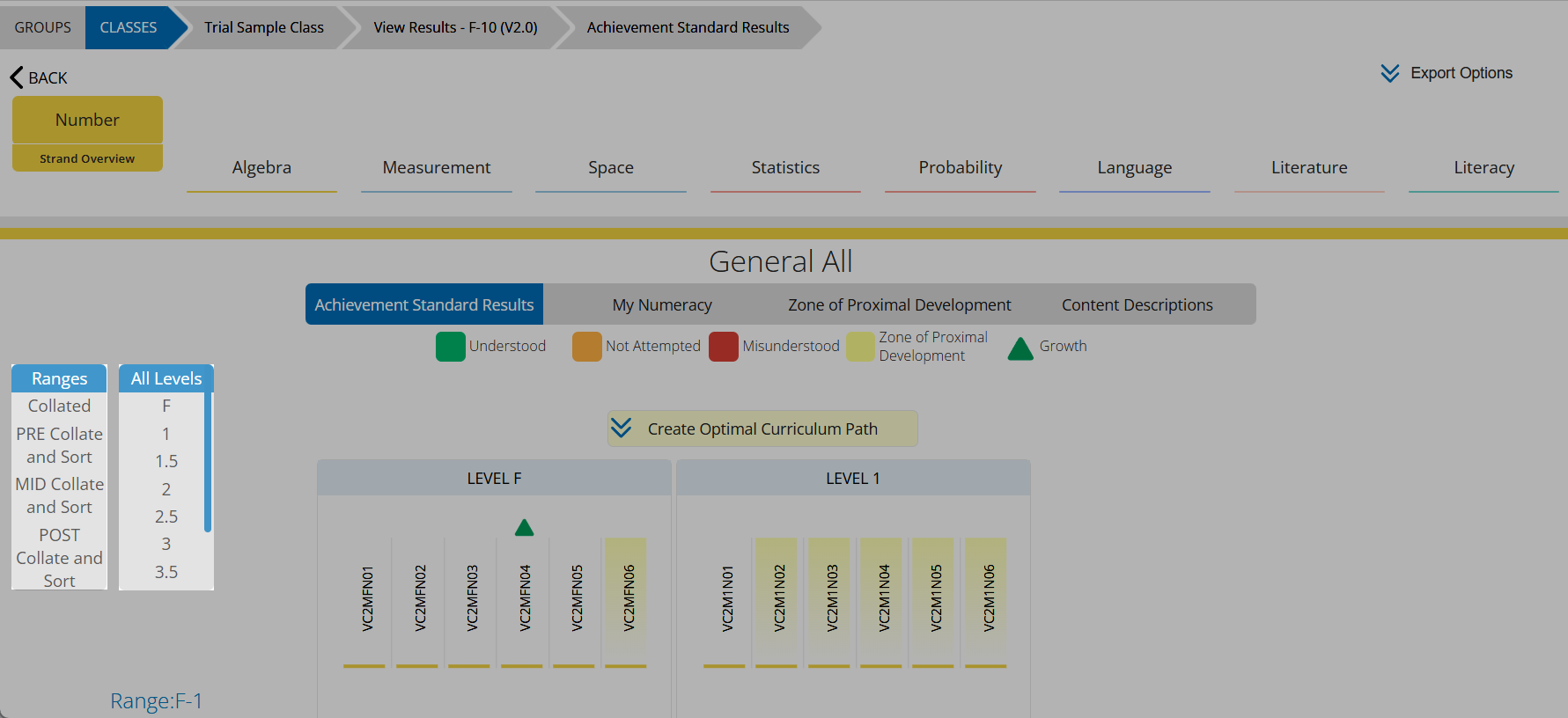
Hover over a student's name to see the number of questions understood and misunderstood within certain ranges. In the screenshot below, the student who received a 2 curriculum level understood the following:
- 5 out of 6 questions for Level 2
- 2 out of 7 questions for Level 3
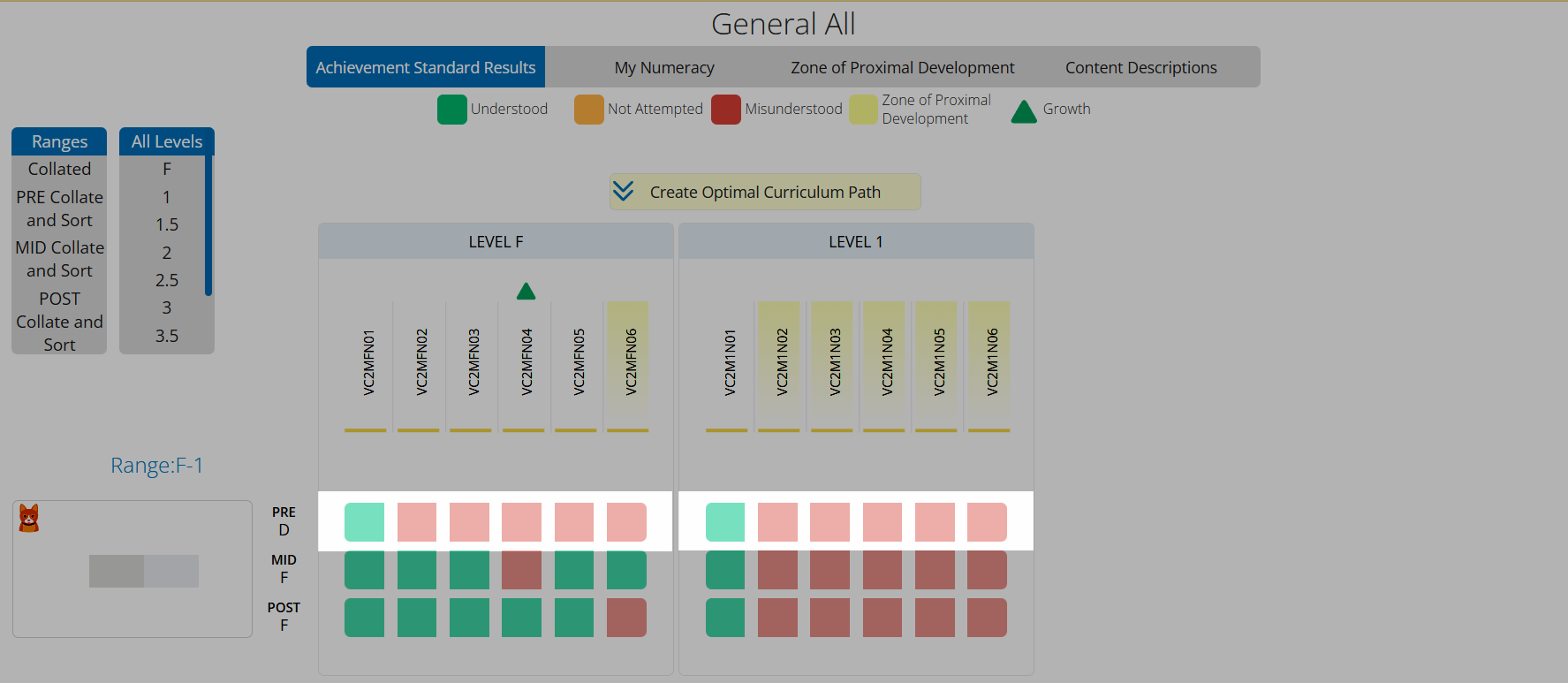
The coloured boxes next to the student correspond to the following:
- Green - Understood
- Orange - Not Attempted
- Red - Misunderstood
- Yellow - Z.P.D
- Green Triangle - Growth (from a post-assessment)

Hover over a concept descriptor to get an overall percentage for Assessment Range Understanding and Overall Understanding.
Assessment Range Understanding is the percentage of understanding for all assessments of a particular range. The Overall Understanding includes all assessments of all ranges.
Z.P.D - Zone of Proximal Development
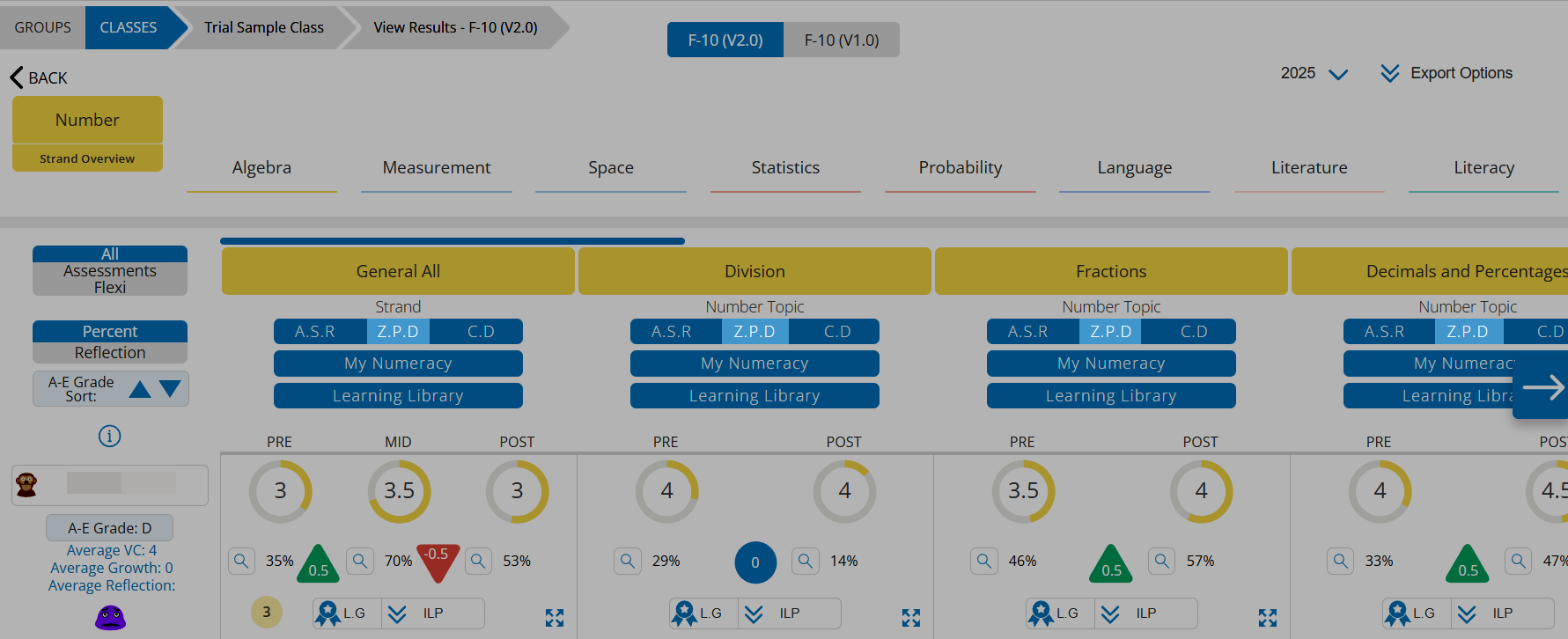
The Z.P.D function offers a quick way to identify common misunderstandings within each group or class to assist with planning for grouping students and differentiating the curriculum.
Click PRE Collate and Sort to collate and sort your data. Students will appear from the highest level of understanding to the lowest level of understanding.
A class or group's Z.P.D is indicated in yellow highlighting, while the green, red and orange highlighting shows what the student understood, misunderstood or didn't attempt.
Clicking into a green or red square will show you the question the student was assessed against for the content descriptor.
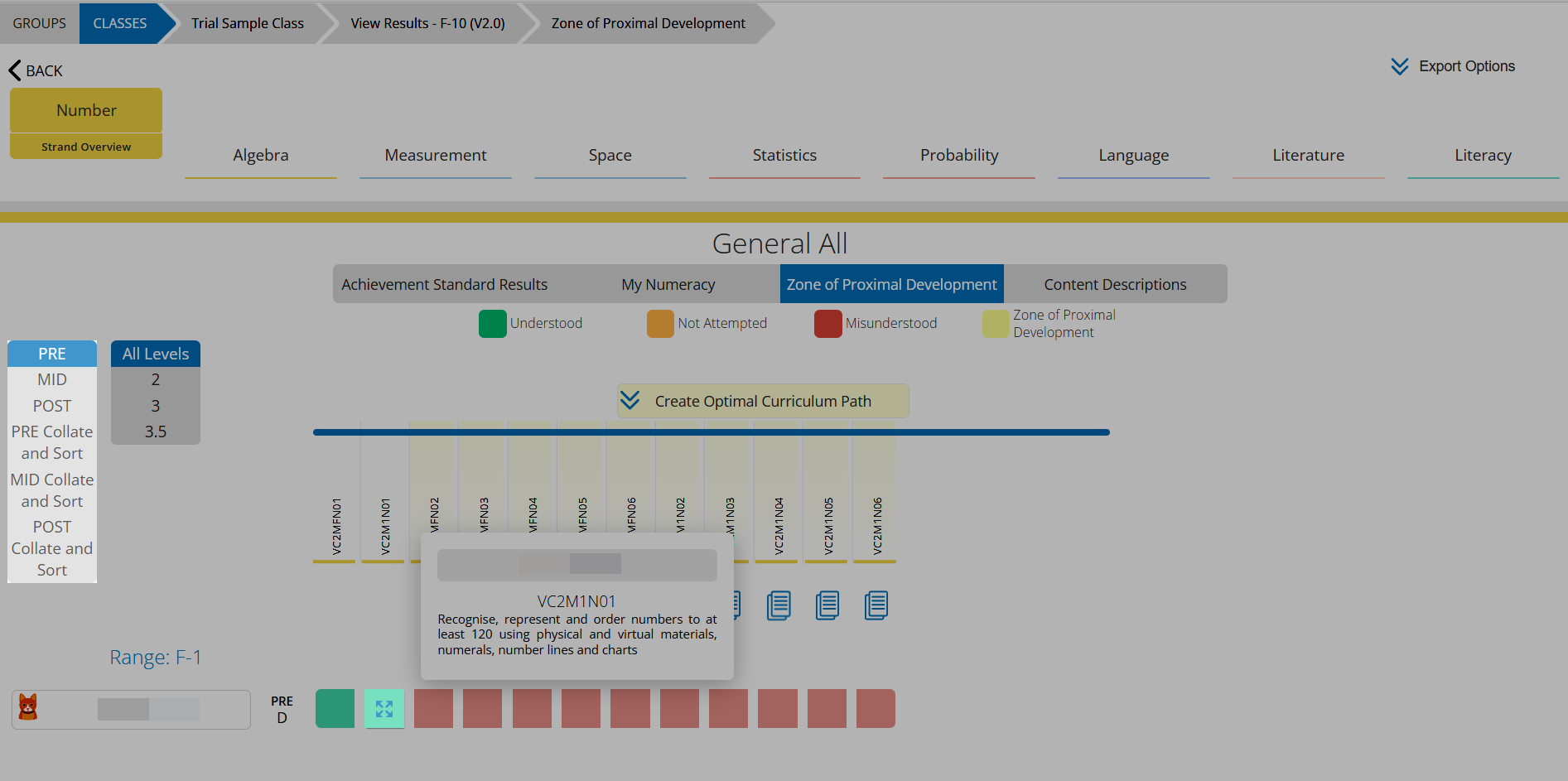
You may see a light green box and a dark green box. The light green box is assumed understanding, and the dark green box is actual understanding. For example, if the student understood higher-level content (dark green), they will have an assumed understanding of lower-level content. For the light-green questions, the students would not have been asked these during their assessment.
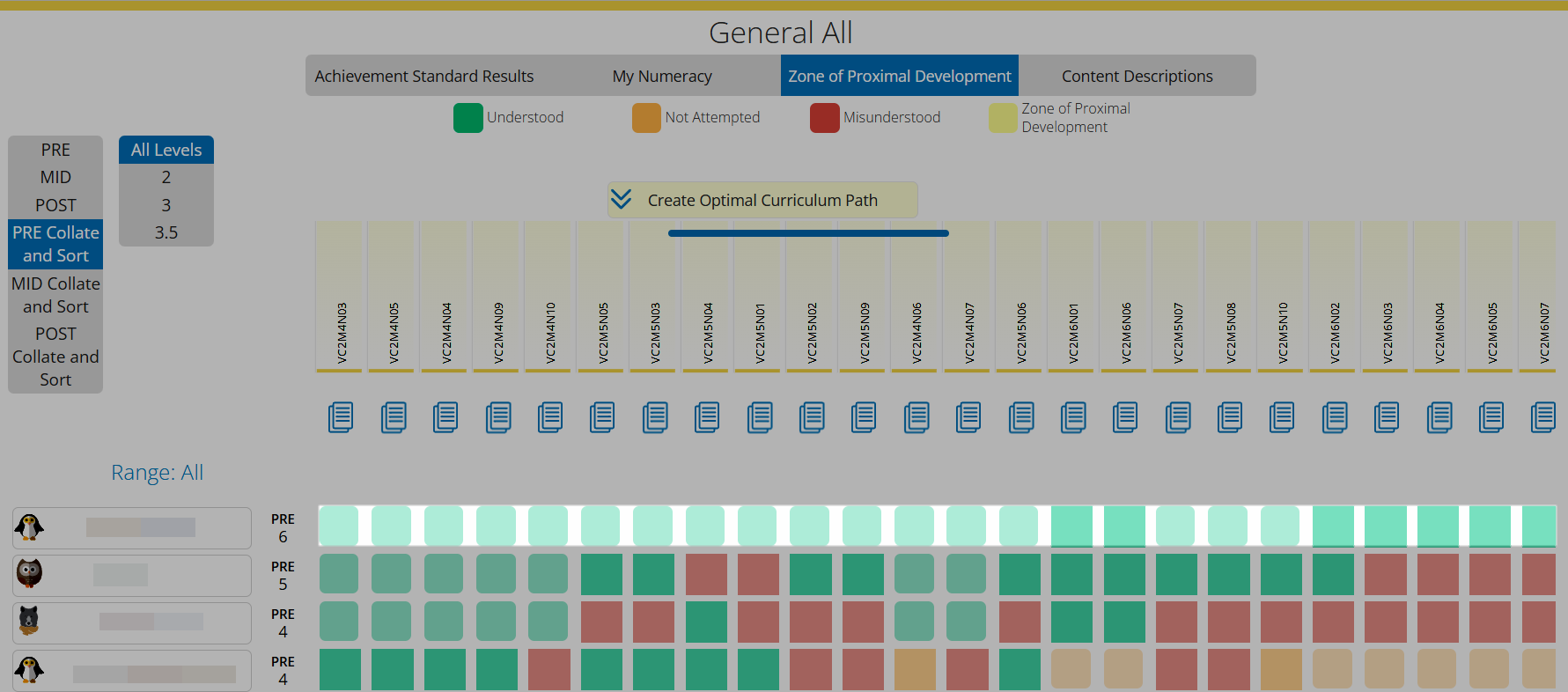
Numeracy Concepts
Numeracy Concepts are available to view under A.S.R, Z.PD and C.D when you are viewing a topic assessment. Click on the Numeracy Concept tab to dive deeper into the concepts identified under each Content Description. This will help you incorporate these concepts into your lesson plans.
